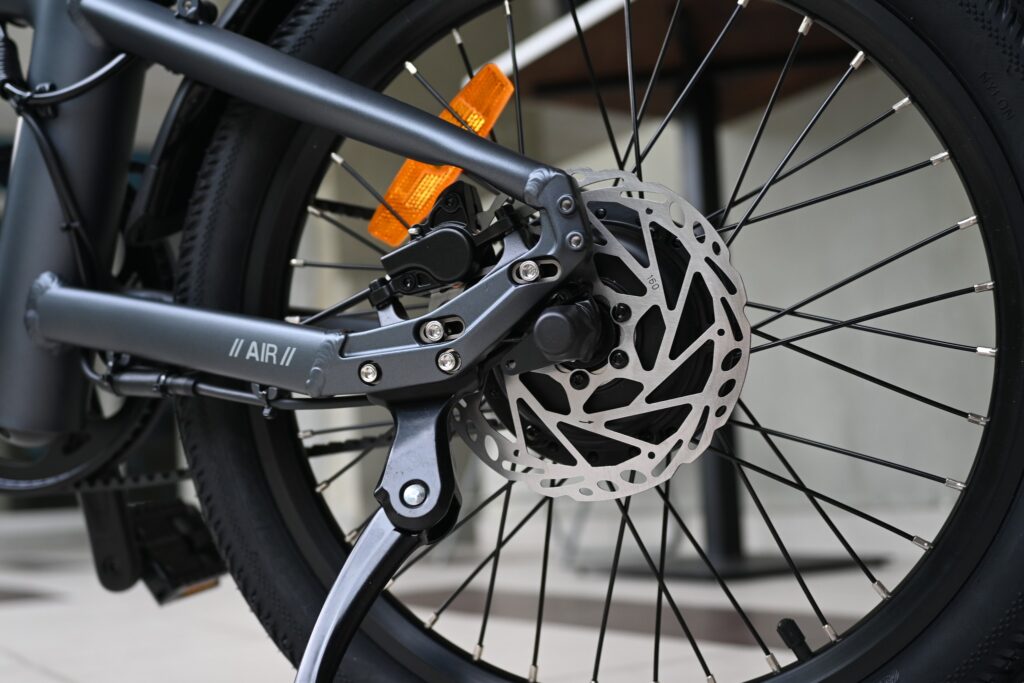
As the world accelerates towards sustainability, the rise of electric vehicles has drawn increasing attention. Among the early adopters of electrification, e-bikes have gained significant traction for their eco-friendly and efficient mode of transportation. One key innovation that has revolutionized the e-bike industry is regenerative braking. In this blog post, we delve into the captivating science behind regenerative braking and its transformative impact on the efficiency of e-bikes.
The Evolution of Regenerative Braking
Regenerative braking, often associated with electric and hybrid vehicles, is a mechanism designed to recover kinetic energy during braking. This innovative concept utilizes the electric motor as a generator, converting the kinetic energy of the moving bike into electrical energy, which is then stored in the battery for later use. The inception of regenerative braking marked a pivotal shift in e-bike technology, demonstrating a new paradigm for energy conservation and efficiency.
Uncovering the Science Behind Regenerative Braking
The fascinating physics behind regenerative braking lies in the principles of electromagnetic induction and energy conversion. When the brakes are applied on an e-bike equipped with regenerative braking, the electric motor switches from propulsion to generation mode, harnessing the rotational energy from the wheels and converting it into electrical energy. This surplus energy not only provides a seamless braking experience but also contributes to extending the overall range of e-bikes.
The Impact on Efficiency and Range
One of the key advantages of regenerative braking in e-bikes is the enhanced efficiency and extended range it offers. By harnessing kinetic energy that would otherwise be dissipated as heat in traditional braking systems, regenerative braking recaptures that energy and stores it back into the battery. This not only conserves energy but also contributes to a significant increase in the overall range of e-bikes, making them more practical and versatile for daily commutes and leisure rides.
Challenges and Future Developments
While regenerative braking presents a compelling solution for enhancing e-bike efficiency, there are challenges to overcome, such as optimizing the system for different terrains and riding conditions. Additionally, continuous innovations are underway to refine regenerative braking systems, aiming to further maximize energy recapture and seamlessly integrate with the e-bike’s overall performance. As technology advances, the potential for regenerative braking to revolutionize the e-bike industry continues to expand, promising even more sustainable and efficient transportation solutions for the future.
Conclusion: Empowering E-bikes: Embracing the Future of Sustainable Mobility
In conclusion, the integration of regenerative braking in e-bikes represents a groundbreaking advancement in sustainable transportation. By harnessing the science of regenerative braking, e-bikes can achieve higher levels of efficiency, extended range, and minimal environmental impact. As the global pursuit of eco-conscious mobility intensifies, regenerative braking stands at the forefront of enhancing the performance and eco-friendliness of e-bikes, paving the way for a greener and more sustainable future.

Interesting article about the science behind regenerative braking in e-bikes! It’s amazing how this tech has reduced our environmental impact, kudos to innovation!
Thank you for sharing your thoughts on our blog post, Aisha! We’re glad you found the information about regenerative braking in e-bikes interesting. At Eko Life Malaysia, we’re committed to promoting sustainable transportation and exploring innovative solutions to reduce our environmental footprint. If you have any more questions or would like to know more about our e-bikes, feel free to contact us at [email protected] or +60 3-7890 3042. We’d be happy to help!
Regenerative braking in e-bikes is a game-changer. It makes me wonder what other forms of sustainable innovation we can expect in the future.
Thanks for your enthusiasm, Nur Shahira! We’re thrilled to see you excited about regenerative braking in e-bikes. At Eko Life Malaysia, we’re committed to staying at the forefront of sustainable innovation, and we’re excited to share more eco-friendly technologies with our community in the future. If you’re curious about what’s in the pipeline, please don’t hesitate to reach out to us at [email protected] or +60 3-7890 3042. We’d love to hear from you and discuss the possibilities!
Brilliant read on the efficiency and range extension of e-bikes! Shows how much of a positive impact innovation can have on our daily commute.
Dear Cecilia Lim, thank you for your kind words! We’re thrilled to hear that you found our blog post informative and thought-provoking. Regenerative braking in e-bikes indeed has the potential to greatly reduce our carbon footprint and make commuters’ lives more sustainable. If you have any further questions or topics you’d like to discuss, please don’t hesitate to reach out to us via [email protected] or call us at +60 3-7890 3042. Looking forward to hearing from you and being a part of this sustainable transportation journey together!